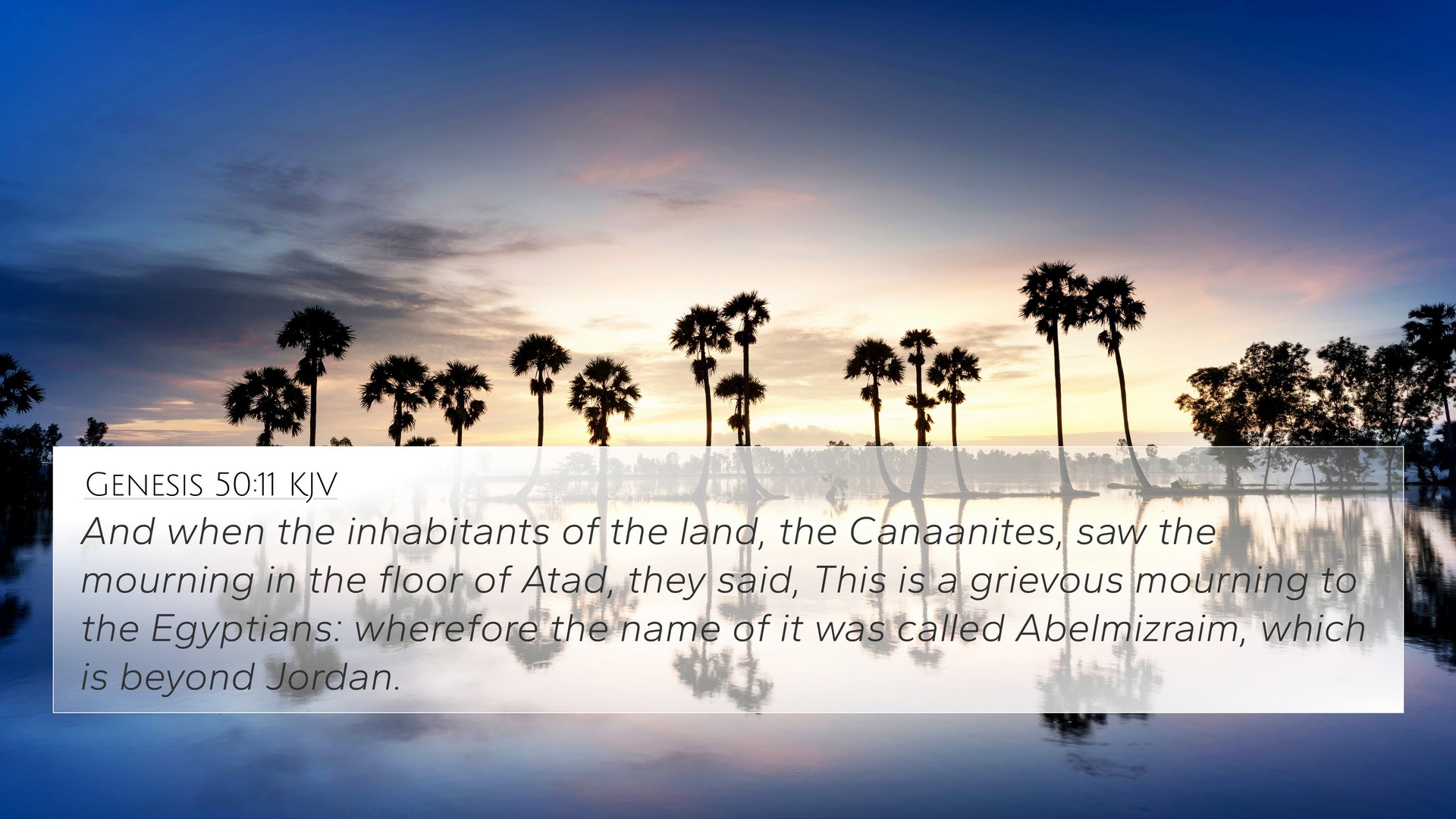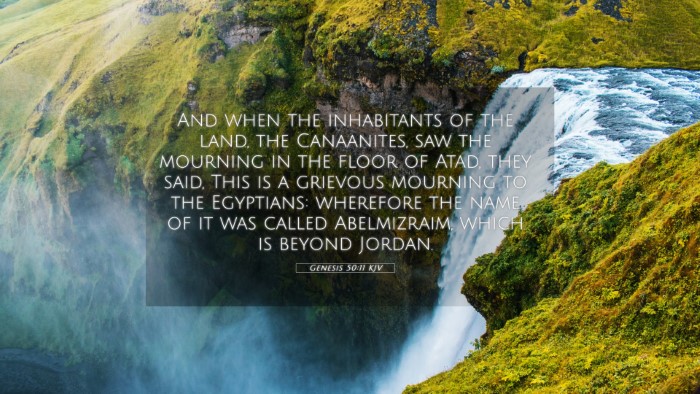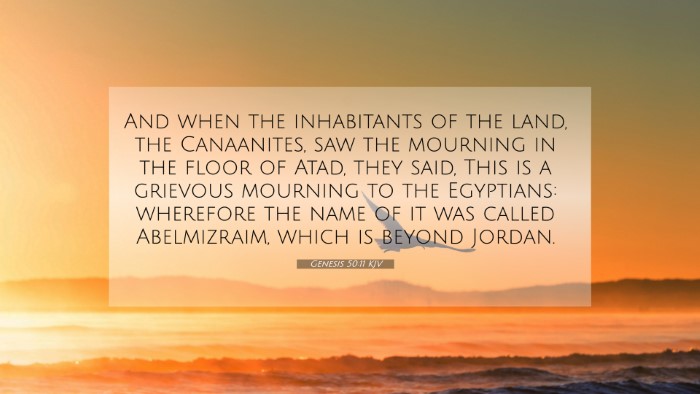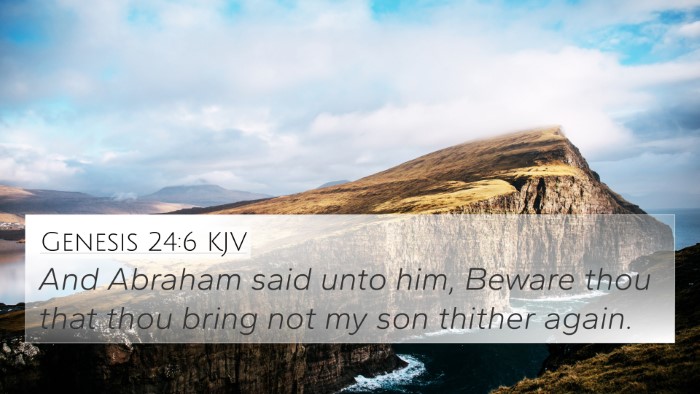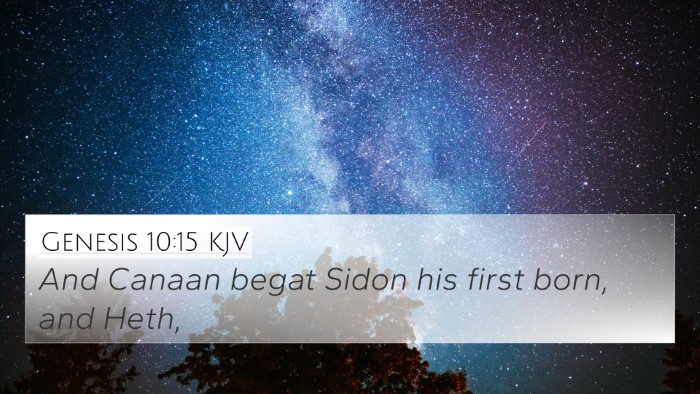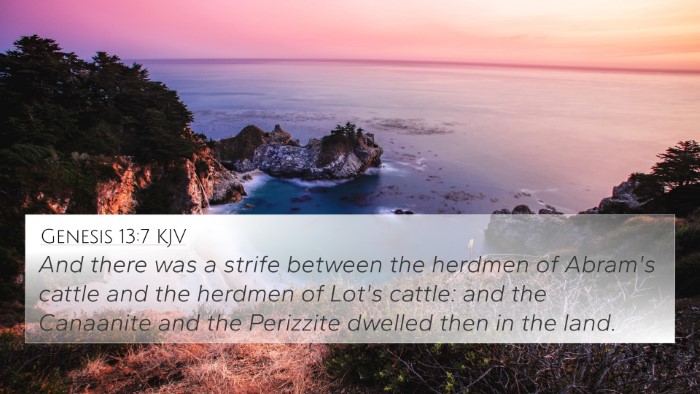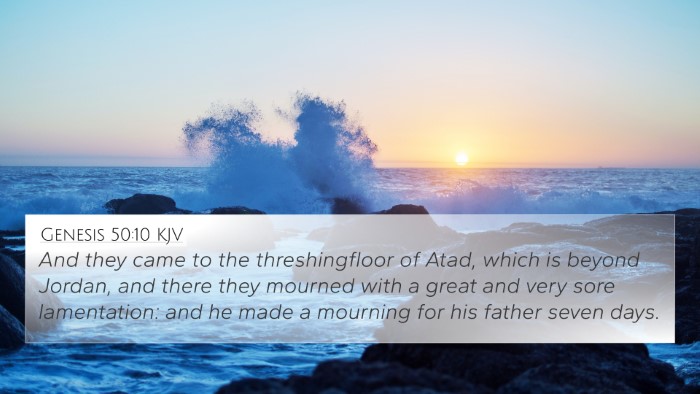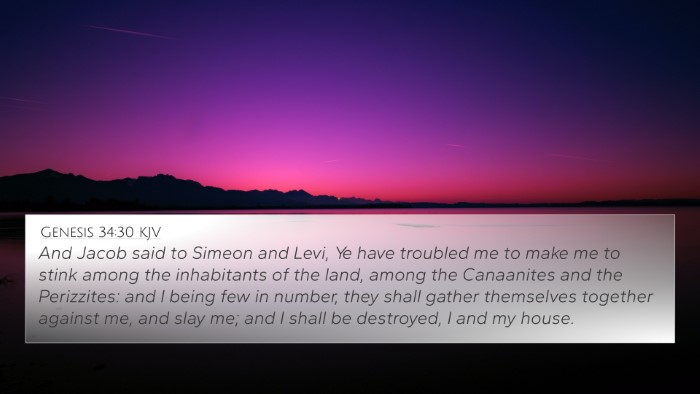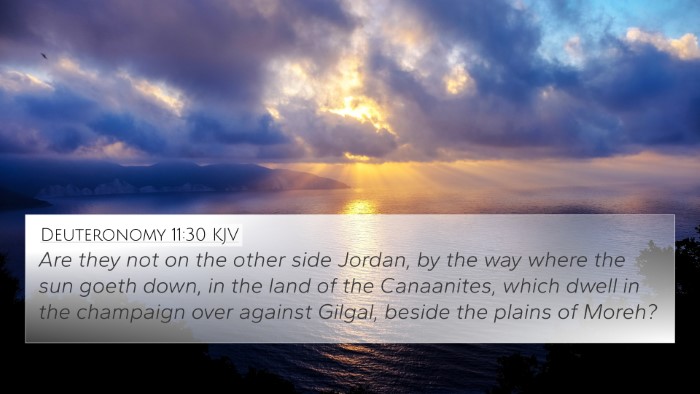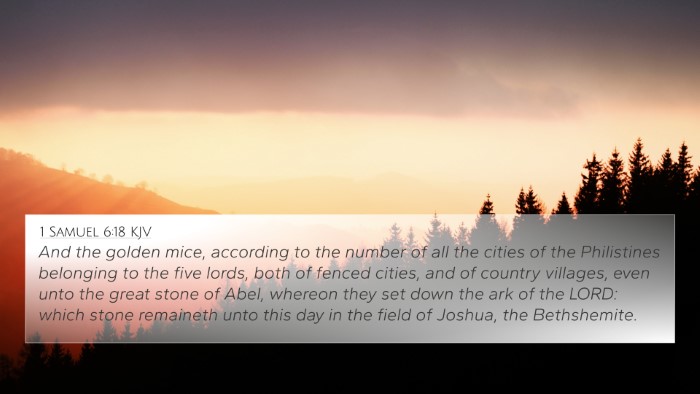Understanding Genesis 50:11
Genesis 50:11 states:
"And when the inhabitants of the land, the Canaanites, saw the mourning in the floor of Atad, they said, This is a grievous mourning to the Egyptians: wherefore the name of it was called Abelmizraim, which is beyond Jordan."
This verse occurs at the conclusion of the story of Joseph, following the death of Jacob (Israel). It captures the deep sorrow surrounding Jacob's funeral and the cultural implications of mourning practices observed by the Egyptians and Canaanites.
Key Meanings and Insights
- Cultural Significance of Mourning: The verse illustrates the profound nature of mourning in ancient societies. Jacob's death was met with great lamentation, highlighting the respect given to family and the deceased in that era.
- Geographical Context: The mention of Canaanites and the geographical reference to Jordan serves to establish the location's significance. The name 'Abelmizraim' demonstrates the blending of cultures and the reaction of surrounding peoples to Israelite customs.
- God's Covenant and Legacy: Jacob's funeral signifies the end of an era in the patriarchal lineage, emphasizing the fulfillment of God's promises made to Abraham, Isaac, and Jacob.
Key Commentaries
Matthew Henry: He notes that the mourning was so intense it caught the notice of surrounding nations. This indicates a collective identity among the Egyptians and their strong cultural responses to death.
Albert Barnes: Barnes emphasizes the implication of the name 'Abelmizraim,' which means 'the mourning of the Egyptians.' He points out that this name preserves the memory of Jacob's death within the cultural memory of Egypt, showcasing the impact of the Hebrews on Egyptian history.
Adam Clarke: Clarke adds that the gathering of people for the funeral suggests a significant event that influenced the relationships between the Egyptians and the Hebrews. It marked not only personal grief but also the social dynamics at play during that time.
Bible Verse Cross-References
This verse can be cross-referenced with several other key scriptures that relate themes of mourning, cultural identity, and transitions in leadership:
- Genesis 37:34-35 - Jacob mourns deeply for Joseph, demonstrating deep familial ties.
- Genesis 49:33 - Jacob gathers his sons before he dies, signifying unity before loss.
- Job 30:25-26 - Job reflects on his suffering and mourning, showing the universal nature of grief.
- Ecclesiastes 3:1-4 - This passage provides a poetic perspective on the time for everything, including mourning.
- 2 Samuel 1:12 - David mourns Saul and Jonathan, reflecting the weight of loss on leadership positions.
- Matthew 5:4 - Jesus teaches that those who mourn are blessed, adding a spiritual element to the concept of mourning.
- John 11:35 - Jesus weeps at Lazarus’s grave, illustrating compassion for human sorrow.
- Luke 8:52 - Jesus confronts a communal mourning, reinforcing that death can be overcome through faith.
Exploring Thematic Bible Verse Connections
The intersection of mourning practices across cultures as depicted in Genesis 50:11 opens avenues for thematic exploration:
- The Nature of Grief: The Bible frequently discusses the human experience of grief, suggesting God understands and cares for those in sorrow, as expressed in the previous cross-references.
- Cultural Interactions: The relationships between different nations and peoples, especially seen in the respect given to the dead, show how cultural exchanges can occur, linking back to creation themes in Genesis.
- Legacy and Memory: This verse reminds readers of the importance of legacy within families and cultures, seeing how Jacob’s death leads to significant reflections in the genealogy of God’s chosen people.
Concluding Thoughts
Genesis 50:11 serves as a poignant reminder of the human condition related to loss and mourning, illustrating the deep emotional fabric woven throughout the biblical narrative. Applying comparative Bible verse analysis enhances the understanding of how the themes in this verse resonate with others across the Scripture.
By utilizing tools for Bible cross-referencing, readers can explore the connections between verses, aiding in sermon preparation or personal study. Understanding these connections fosters a holistic approach to studying scripture, enriching one’s spiritual journey.
Further Study and Reflection
For a deeper understanding of the connections between Old and New Testament themes, consider these additional study methods:
- Cross-reference Bible study: Engage with cross-reference systems to trace similar themes.
- Identifying connections: Look for how mourning and grief are treated in both the Old and New Testament.
- Comparative study: Explore how different biblical authors address similar topics.
